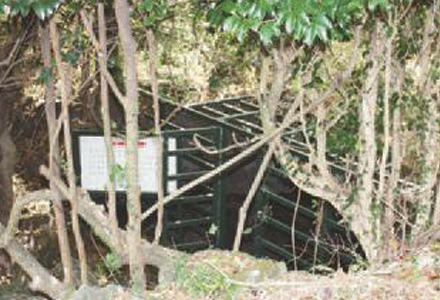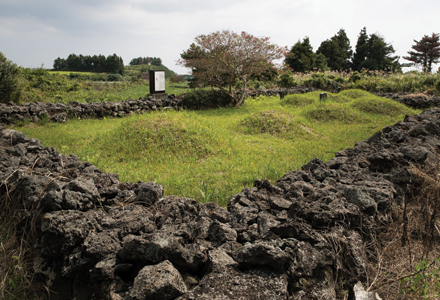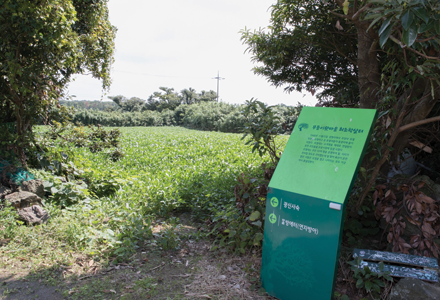The massacre committed at Bukchon-ri village by the Korean Constabulary on Jan. 17, 1949, stands out for its brutality even among the horrors of the 4·3 period. Over 400 villagers were murdered by state forces in this corner of northeast Jeju as officers retaliated against the murder of two soldiers by rebels nearby. Houses were torched and people dragged to a local field where they were executed. Even those who fled were hunted down and executed the next day. The events would become the inspiration behind Hyun Ki-young’s 1978 novella “Sun-i Samch’ on.” The village today is renowned for its strong haenyeo (diving women) culture and community spirit.


Neobeunsungi 4·3 Memorial Hall (in Bukchon Village)
On Jan. 17, 1949, two soldiers were killed in ambush by armed guerillas on the uphill path west of Bukchon Elementary School. In retaliation, counterinsurgency forces rushed into Bukchon Village, massacring 300 villagers in Neobeunsungi Stone Field. In 2009, an altar, a memorial hall and a memorial monument were built near the filed. The site also has a literary monument for Hyun Ki-young’s “Sun-i Samch’on,” a short story inspired by the Bukchon Village Massacre.

Doetgwe Cave
Doetgwe cave provided residents of Donggwang Village refuge during Jeju 4·3. The 30-meter-long cave is connected to Keunneolgwe cave nearby. Utensils used by the refugees can still be found on the cave floor, vivid proof of the dire situation residents faced during Jeju 4·3. The cave was one of the filming locations of the award-winning film “Jiseul.”

Lim Moon-suk Family’s Empty Graves
When Donggwang Village residents who had been hiding in Keunneolgwe cave were discovered by the counterinsurgency forces in mid-November 1948, they scattered in all directions. In the harsh cold, most of them failed to find another hiding place and were captured only to be massacred near Jeongbang Waterfall without due process. Their bodies were either left to decompose where they were shot or were swept away into the sea. The bereaved family of Lim Moon-suk created seven empty graves (two of which were for married couples) to appease the souls of their nine missing family members.

Mudeungiwat District’s First Massacre Site
On Nov. 15, 1948, counterinsurgency forces raided Donggwang Village. The residents who had remained in the village’s Mudeungiwat District for having been ill-informed of the eviction order were forced to gather in the site pictured. Ten people were selected at random and beaten to the extent that their limbs were broken. The less injured escaped while the rest were shot to death.

Ambush and Massacre Site
On Dec. 12, 1948, counterinsurgency forces hiding in ambush on the site pictured in Mudeungiwat District cornered more than 10 members of Kim Du-baek’s family and covered them with straw mats that were then set on fire, burning them alive. The victims screamed in flames, most of whom were women, the elderly and children.